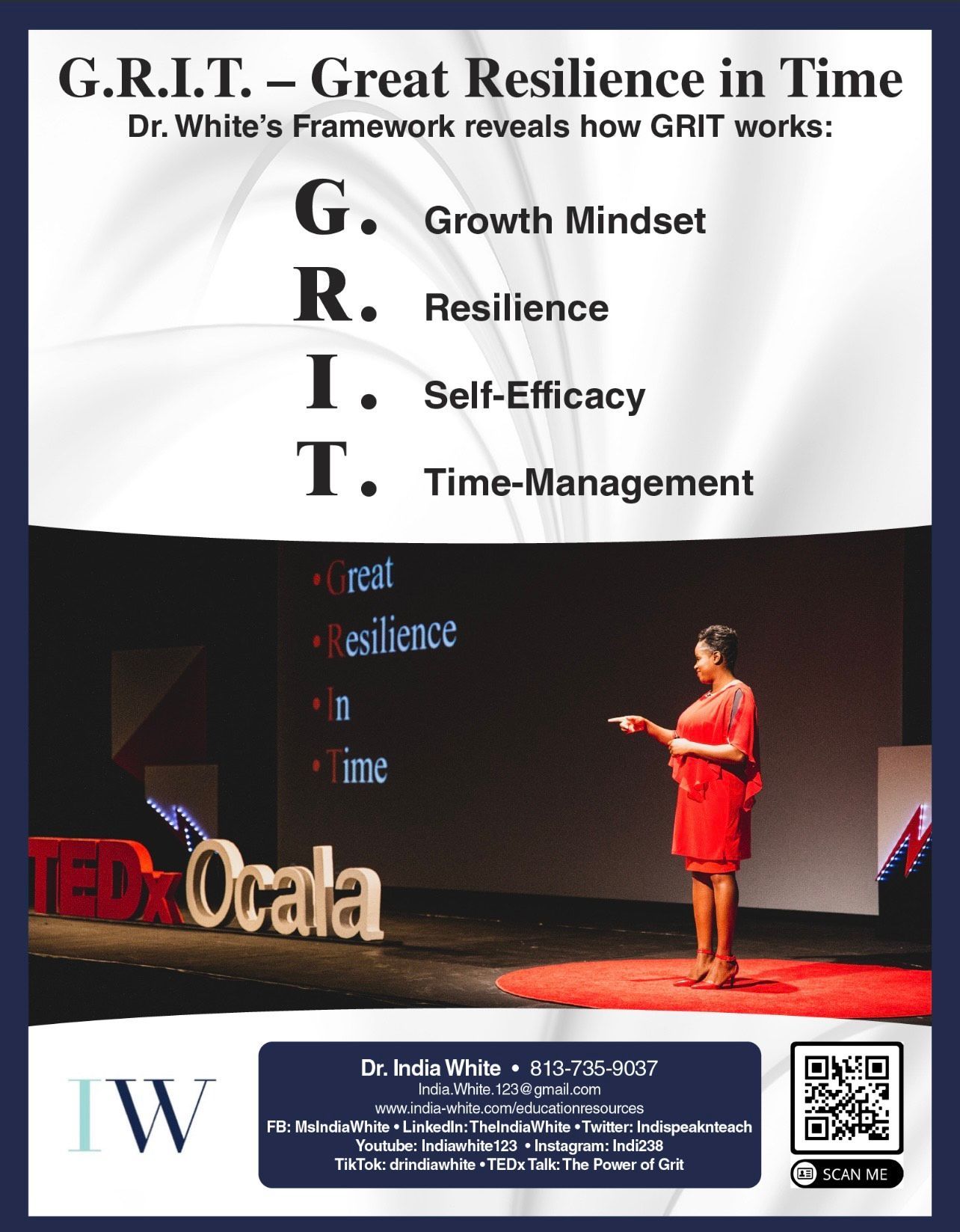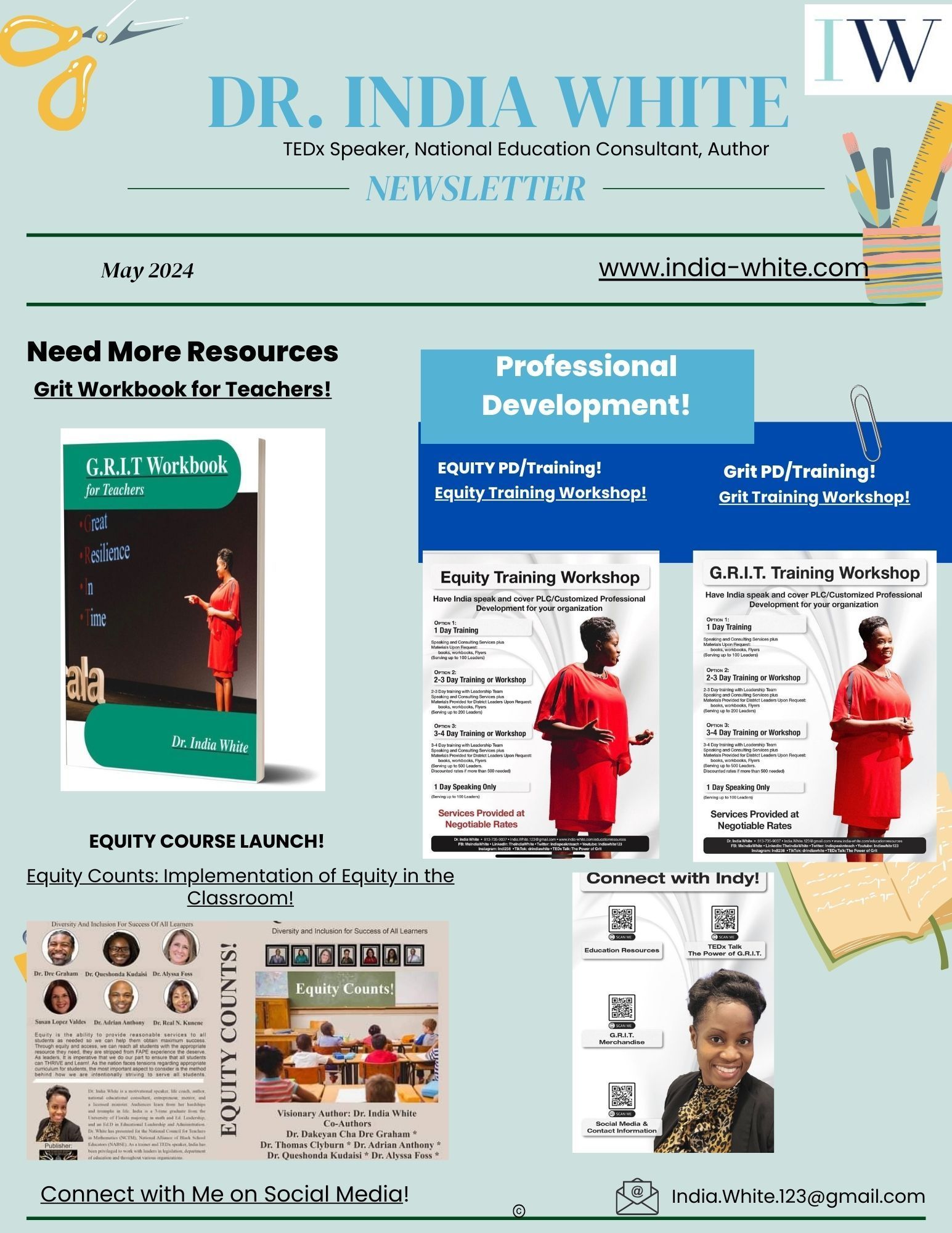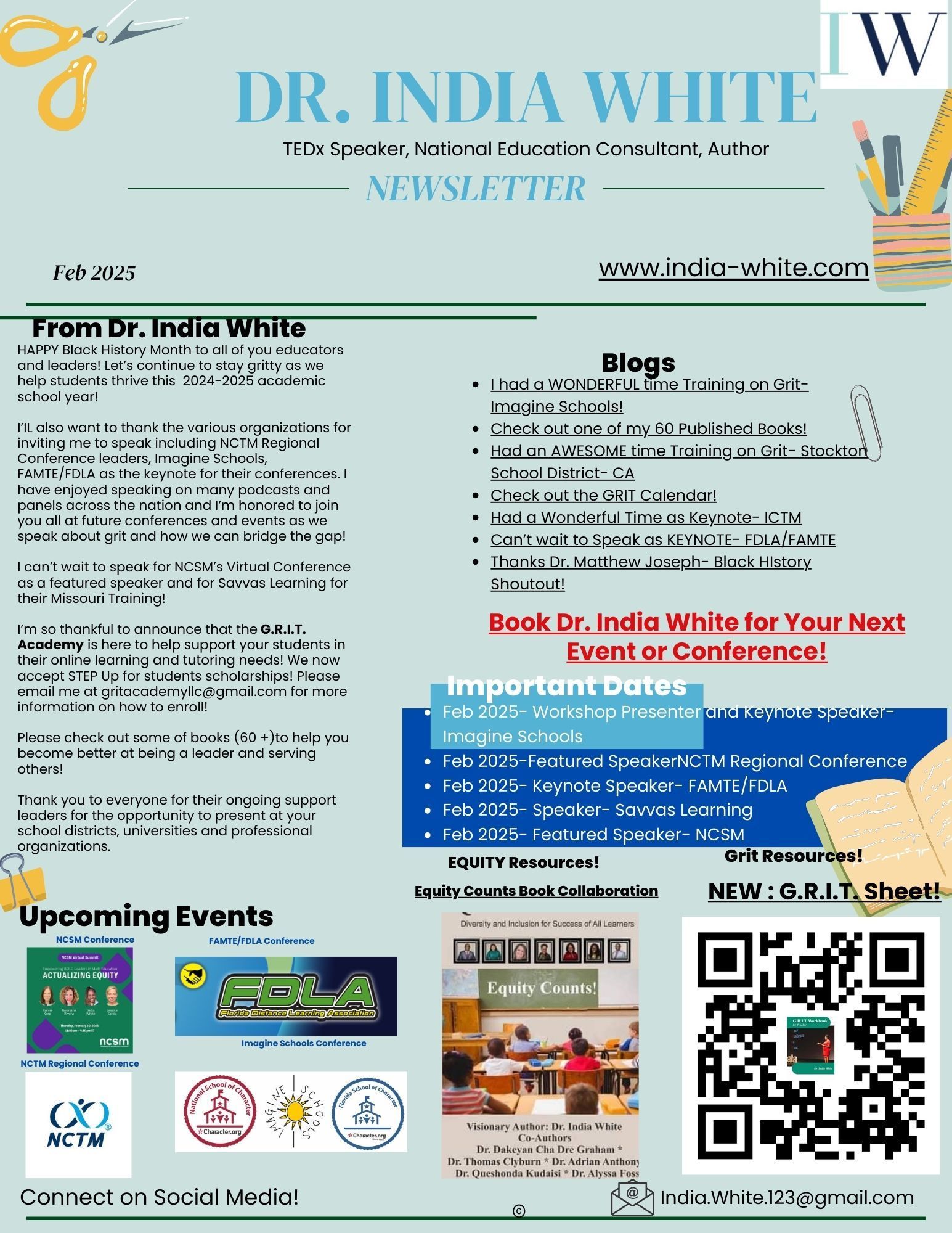Blog Layout
Building Mathematical G.R.I.T. through the G.R.I.T. Framework!
India White • October 17, 2024
Building Mathematical G.R.I.T. Through the G.R.I.T. Framework!

Building Mathematical Grit: 5 Tips for Teachers to Foster Resilience and Self-Efficacy in Students
As educators, one of the most powerful lessons we can impart to students is not just about solving equations but developing the mindset and grit to persist through challenges. Dr. India White’s G.R.I.T. Framework, introduced in her TEDx Talk "The Power of Grit," emphasizes four essential components—Growth Mindset, Resilience, Self-Efficacy, and Time Management—to build mathematical grit in students. Here are five actionable tips based on this framework to help foster resilience and perseverance in your classroom.
1. Encourage a Growth Mindset
Tip: Turn Challenges Into Learning Opportunities
Mathematical grit begins with a growth mindset. Students who see mistakes as part of the learning process are more likely to persevere when faced with difficult problems. Encourage your students to reframe challenges as opportunities for growth, reminding them that effort and persistence are key to improvement.
Strategy: Use encouraging phrases such as, “Mistakes are proof that you’re trying,” or “Let’s learn from this and get stronger.” Regularly praise effort over results to create a classroom culture that values progress and persistence.
2. Build Resilience Through Iteration
Tip: Help Students Bounce Back From Setbacks
Resilience is about the ability to recover from failure and push forward. Teach students to persist through difficulties by embracing the iterative nature of problem-solving. It’s not just about getting the correct answer but learning to handle frustration and keep trying.
Strategy: Incorporate problem-solving activities that require multiple attempts. Use real-world examples to show how mathematicians often solve complex problems through trial and error. Encourage reflection on “What went wrong?” and “How can we improve?”
3. Foster Honest Self-Efficacy
Tip: Empower Students to Believe in Their Abilities
Self-efficacy is essential for building mathematical grit. It’s the belief that one can solve problems and overcome challenges with persistence. Cultivate an environment where students engage in self-reflection and build the confidence to approach problems ethically and with determination.
Strategy- Promote self-assessment by having students evaluate their problem-solving strategies after completing a task. Encourage them to ask, “What strategies worked well?” and “What can I do differently next time?” This reinforces self-awareness and accountability, key components of self-efficacy.
4. Cultivate Time Management Skills
Tip: Teach Persistence and Goal-Setting
Time management is an often-overlooked aspect of building grit. Students need to learn how to set goals, manage their time effectively, and persist even when faced with long, complex tasks. Helping students break down large problems into smaller, manageable tasks makes the learning process less overwhelming and promotes steady progress.
Strategy: Teach students how to create action plans for solving complex problems. Break tasks into steps, estimate the time needed for each, and help students track their progress. Celebrating each small win will motivate them to continue working toward mastery.
5. Integrate Gritty Practices with Tangible Tools
Tip: Use Handouts and Visual Aids to Reinforce the G.R.I.T. Framework
Reinforce the G.R.I.T. Framework through tangible resources that guide students in applying these principles. Handouts that explain Dr. White’s G.R.I.T. practices—growth mindset, resilience, self-efficacy, and time management—can serve as reference points for students as they work through challenging problems.
Strategy: Provide students with a G.R.I.T. checklist to self-assess their progress. Include prompts like, “Did I try a new strategy today?” or “How did I manage my time on this task?” This empowers students to take ownership of their learning process and to track their growth over time.
By incorporating these five tips into your teaching practices, you’ll help build a classroom culture where students not only develop mathematical skills but also the resilience and perseverance to succeed in all aspects of life. Dr. White’s G.R.I.T. Framework offers a comprehensive approach that empowers students to embrace challenges, build confidence, and develop the grit needed for long-term success.
Now, are you Ready to Empower Your Students?
As educators, our goal is not just to teach content but to cultivate essential life skills that will help students thrive beyond the classroom. Building mathematical grit is an investment in their future—helping them grow into resilient, confident problem-solvers ready to tackle any challenge that comes their way.
Slide title
Write your caption hereButton
Slide title
Write your caption hereButtonSlide title
Write your caption hereButton
Slide title
Write your caption hereButton

By India White
•
February 11, 2025
Join us on the Let's Get Gritty Podcast with Dr. India White. On this show, we will repeat a show from the Grit and Equity talks Podcast with Dr. India White, where we walk through the recently released NAEP data from the National Report Card and speak about moving the needle forward. Listen on Spotify: https://podcasters.spotify.com/pod/show/india-white3 #grit #equity #naep #drindiawhite #nctm #ncsm #bwxme #math #teachers #students
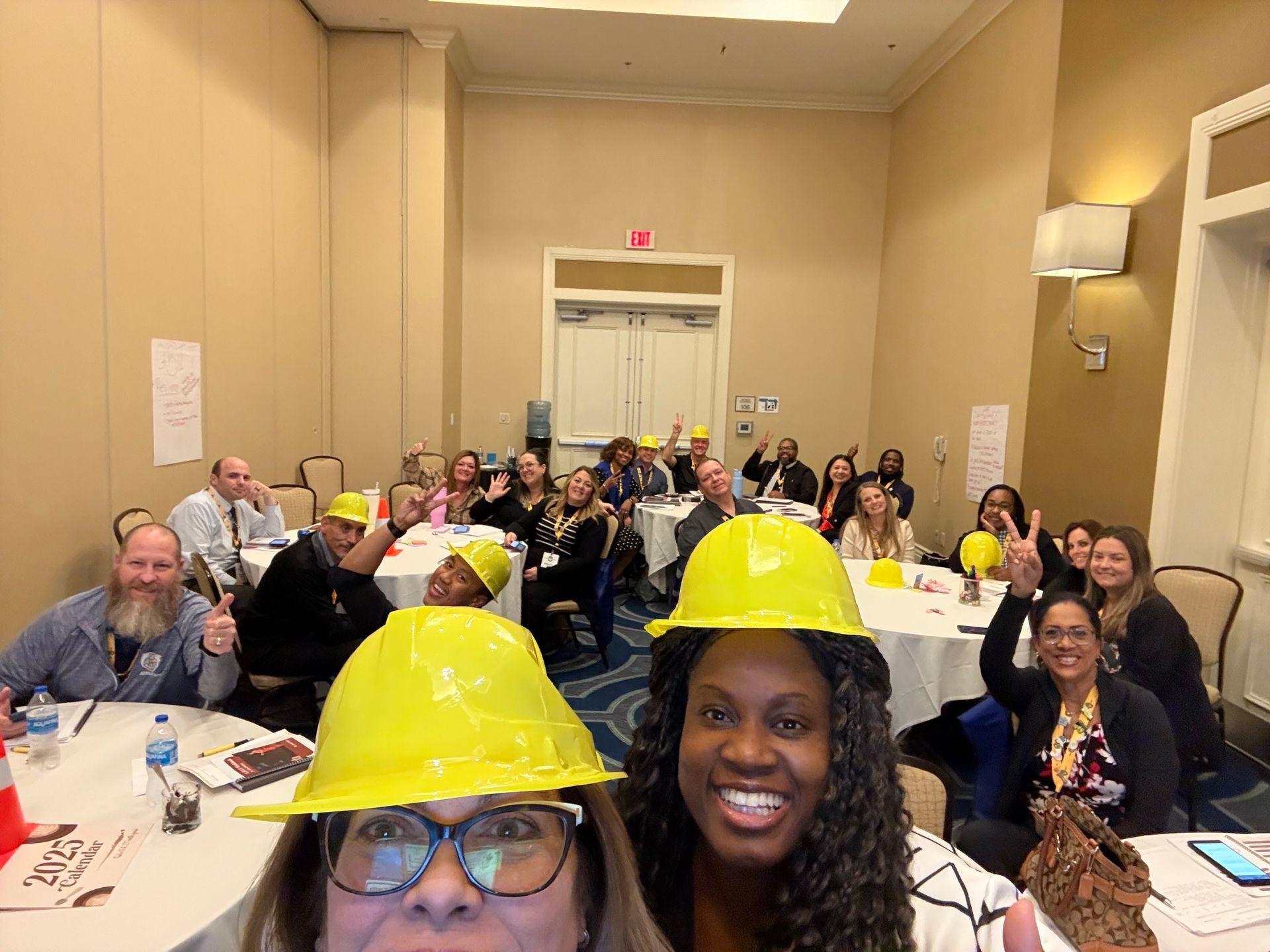
By India White
•
February 11, 2025
🌟 Just wrapped up an incredible G.R.I.T. Training session with the amazing leaders from Imagine Schools! 💪✨ We took a deep dive into the G.R.I.T. framework, and I can't wait to see the results unfold! 🚀🙌 #drindiawhite #grit #imagineschools #tedx #nctm #ncsm #bwxme 🎉 (I don’t own music copyright

By India White
•
February 6, 2025
Thankful for Partnership and Recognition: A Shoutout to Dr. Matthew Joseph and X-Factor EDU Network I am incredibly thankful to partner with Dr. Matthew Joseph and the amazing leadership of the X-Factor EDU Network! It is truly an honor to collaborate with such a visionary leader who is dedicated to amplifying voices in education and creating spaces for impactful conversations. This month, I was deeply grateful to be mentioned in Dr. Joseph’s newsletter during Black History Month. His recognition means so much, not just for me, but for the work we are all doing to inspire and empower educators and students alike. You can check out the newsletter here: https://www.linkedin.com/posts/drmxj_stongertogether-activity-7291502796753809408-0zX3?utm_source=share&utm_medium=member_desktop&rcm=ACoAAAmqD2wBkz8Qc7EA0bvwxWyMJH2HykCUA-Y But beyond the shoutout, I’m even more excited about the opportunities ahead—including the chance to have a podcast on Dr. Joseph’s platform! Partnering with X-Factor EDU Network opens doors to share insights, engage in meaningful discussions, and continue championing grit, resilience, and equity in education. Thank you, Dr. Matthew Joseph, for your support, encouragement, and belief in this mission. Looking forward to what’s to come! 🚀 #StrongerTogether #GRIT #XFactorEDU #BlackHistoryMonth #EducationalLeadership #Thankful

By India White
•
February 6, 2025
Fired Up for FDLA/FAMTE Keynote: Let’s Build Grit Together! I’m beyond excited to take the stage as the keynote speaker at the FDLA/FAMTE Conference tomorrow! 🎤🔥 We’ll be diving deep into the power of G.R.I.T.—Great Resilience in Time—and how it transforms both educators and students. This opportunity means so much, and I’m grateful to everyone who has supported this journey. Grit isn’t just a concept; it’s a movement. It’s about growth mindset, resilience, self-efficacy, and time management, and it’s what drives success in the classroom and beyond. Let’s empower educators and students across the nation to push past obstacles and embrace productive struggle. Who’s ready to get gritty? 💪🏾 #Grit #DrIndiaWhite #TEDx #FDLA #FAMTE #Education #GrowthMindset
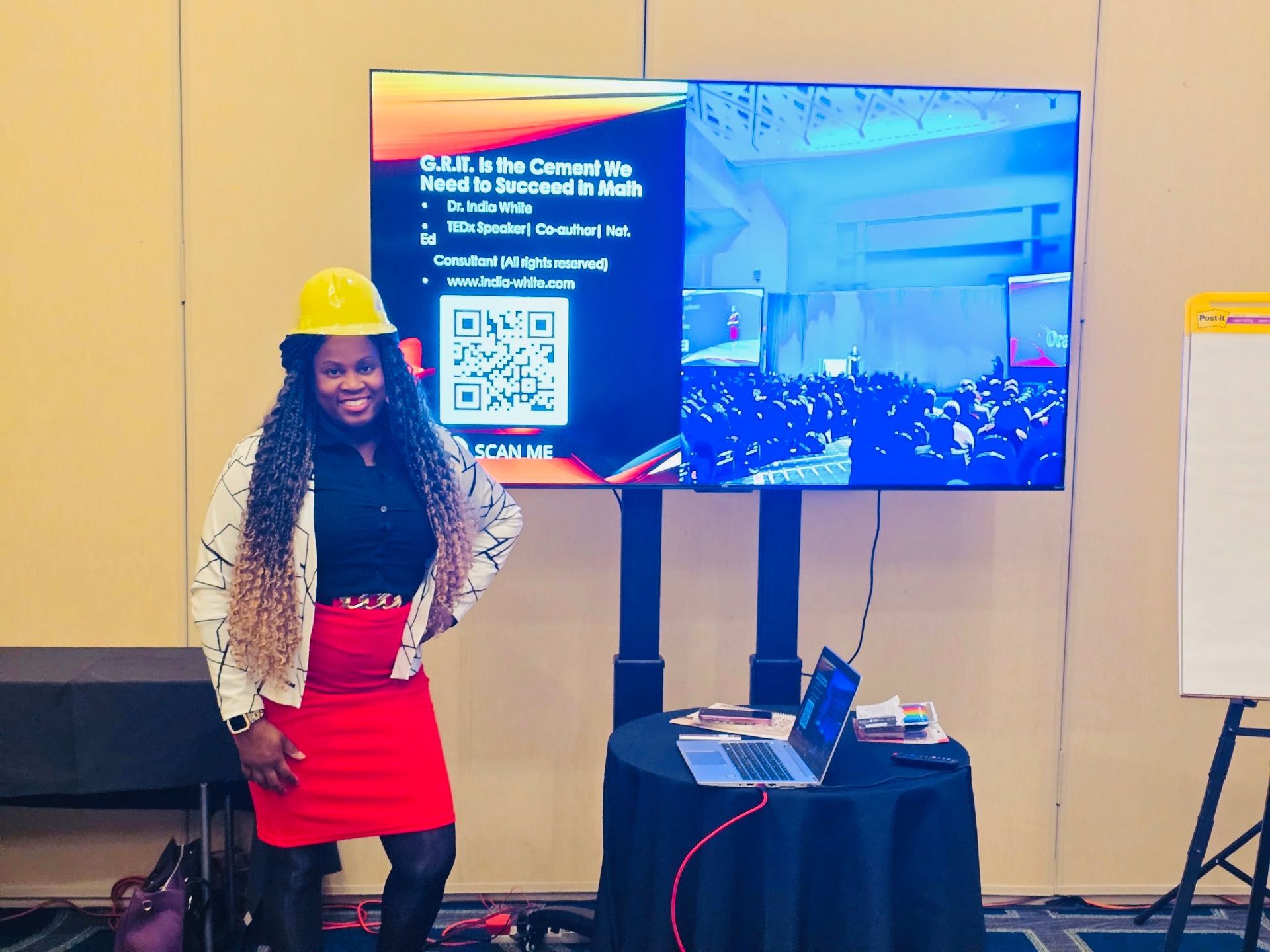
By India White
•
February 5, 2025
Had an Amazing Time at the Imagine Summit! I had a fantastic time speaking at the Imagine Summit on G.R.I.T.! 🙌🏽 We engaged in powerful breakout sessions, had meaningful discussions about NAEP data, and explored strategies to build **growth mindset, resilience, self-efficacy, and time management** in education. Thank you to everyone who participated and brought such great energy to the conversations! Let’s continue working together to bridge gaps and empower students through grit and perseverance. 💪🏽 #GRIT #ImagineSummit #Resilience #Education #GrowthMindset #EquityInEducation #drindiawhite
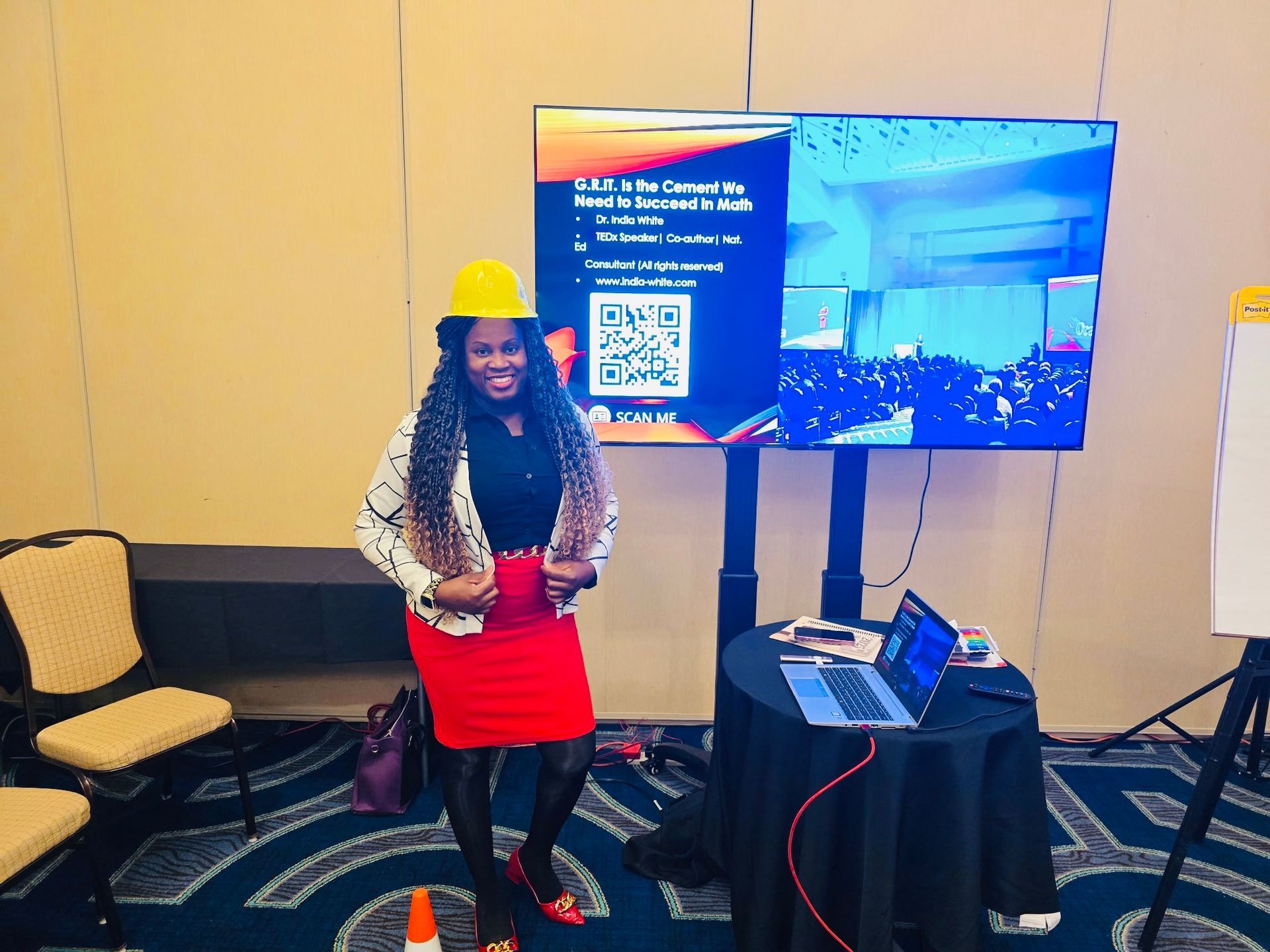
By India White
•
February 5, 2025
Building Grit in Teachers at the Imagine Leadership Summit I am beyond excited to be speaking at the Imagine Leadership Summit today, sharing insights on how we can build grit in teachers and empower them to foster resilience, self-efficacy, and growth in their students. 🌟 This summit is an incredible opportunity to collaborate with principals and education leaders who are committed to supporting and strengthening teachers. When we invest in teacher grit, we build stronger, more effective classrooms where students develop the perseverance to tackle challenges and achieve success. A huge thank you to the Imagine Summit leaders for this amazing opportunity! It’s an honor to be among such an outstanding lineup of speakers, including the incredible Kyle Pearce and Jon Orr. Join our sessions today and take GRIT with you—because when teachers grow in resilience, our students thrive! #GRIT #Teachers #Principals #DrIndiaWhite #NCTM #NCSM #ImagineSummit 😊

By India White
•
January 26, 2025
🌟 What an incredible time at the ICTM conference in Indiana! The lineup was amazing, and the energy was contagious! 🎉 Since I missed the snow back in Florida, I embraced it fully here and made my very first snow angel! ❄️ So grateful for the fun and gritty spirit of the ICTM rockstars! Huge thanks to Angela and every rockstar for this fantastic opportunity! 💙 #drindiawhite #grit #ictm25 #math #teachers #students #indiana #nctm #ncsm
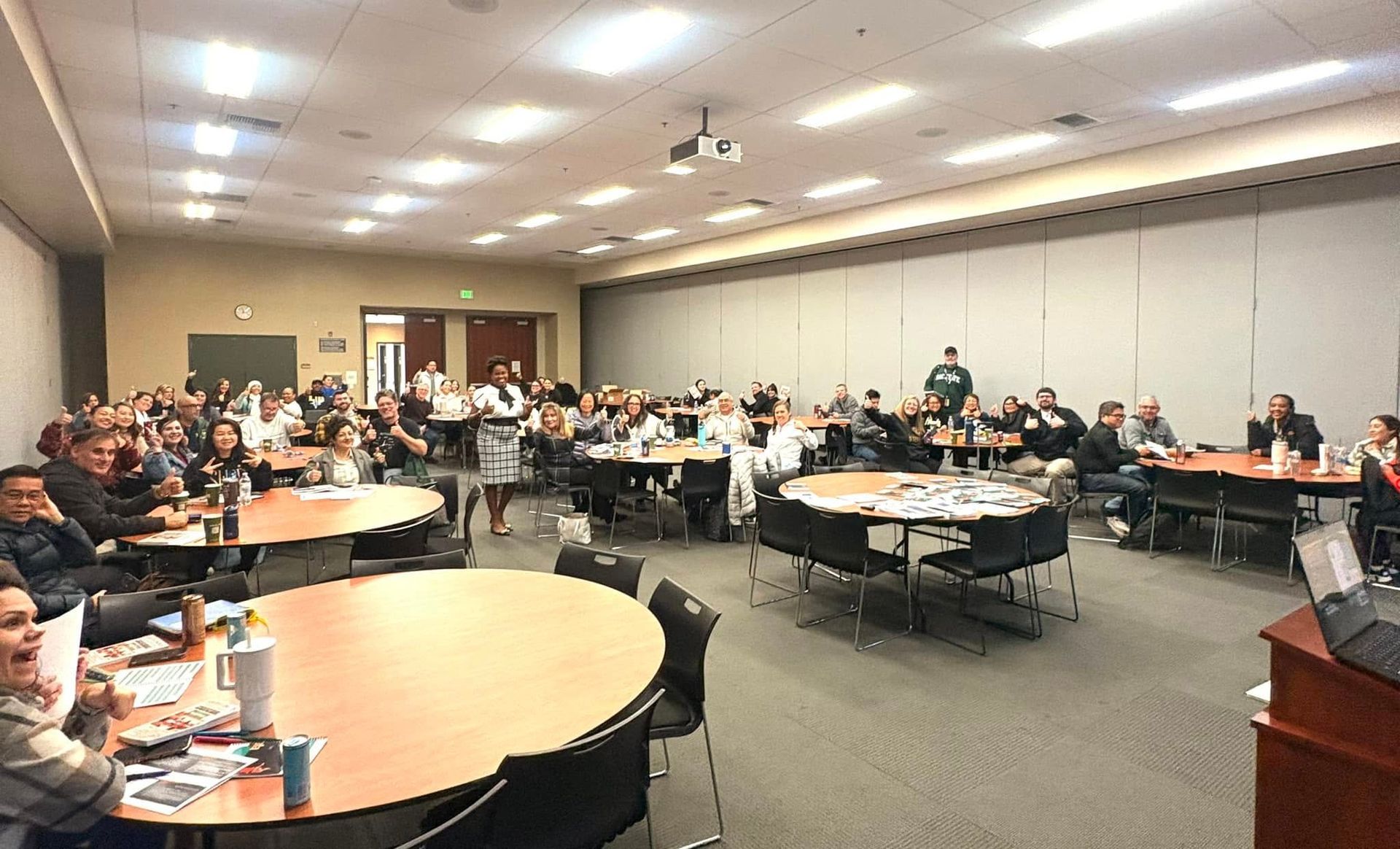
By India White
•
January 25, 2025
✨ Today’s Grit training at Stockton Unified was absolutely amazing! We had a fantastic time connecting with friends and meeting some incredible rockstars in California. 🌟 I can’t wait to see how gritty Stockton becomes! Huge thanks to Andrew and the tribe for the opportunity to train your amazing leaders. Let’s all take grit with us as we move forward! 💪 #Grit #Leadership #StocktonUnified #drindiawhite #tedx #nctm #ncsm #nabse
Contact Us
Thank you for contacting us.
We will get back to you as soon as possible.
We will get back to you as soon as possible.
Oops, there was an error sending your message.
Please try again later.
Please try again later.
© 2025
India White, All Rights Reserved. Powered By Automation Links
Terms of Us | Privacy Policy | About
